

Josh Nevett
2025 Bentley Bentayga review
5 Days Ago
The positively non-van-like Kia Carnival accounts for more than half of all the people-movers sold in Australia. There is a new one around the corner, but the outgoing model remains our MPV of choice. And don't forget - runout deals are imminent.
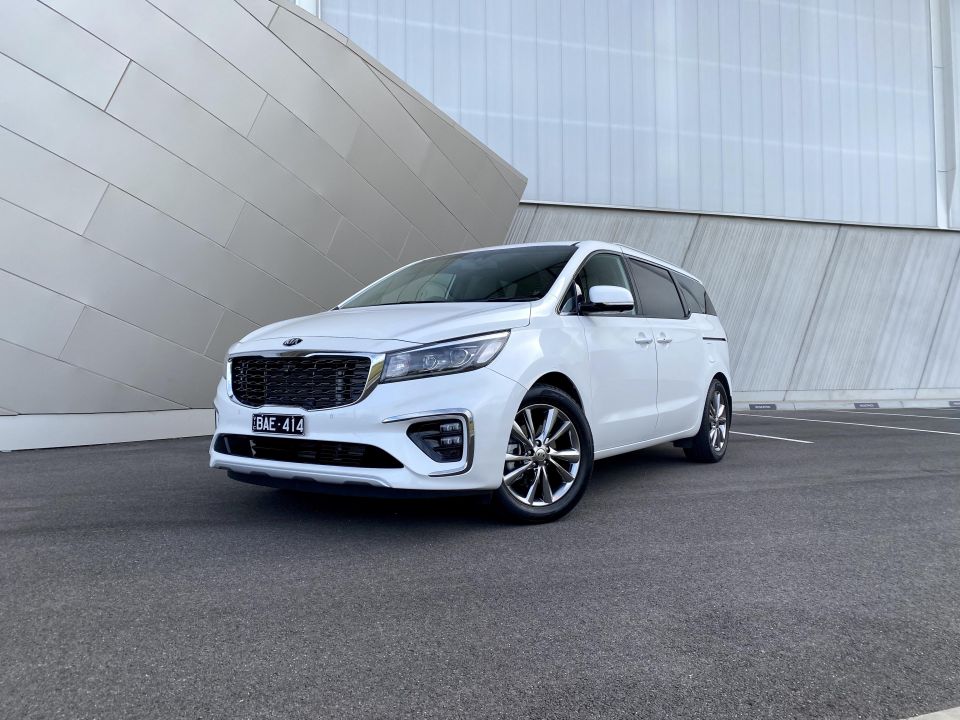
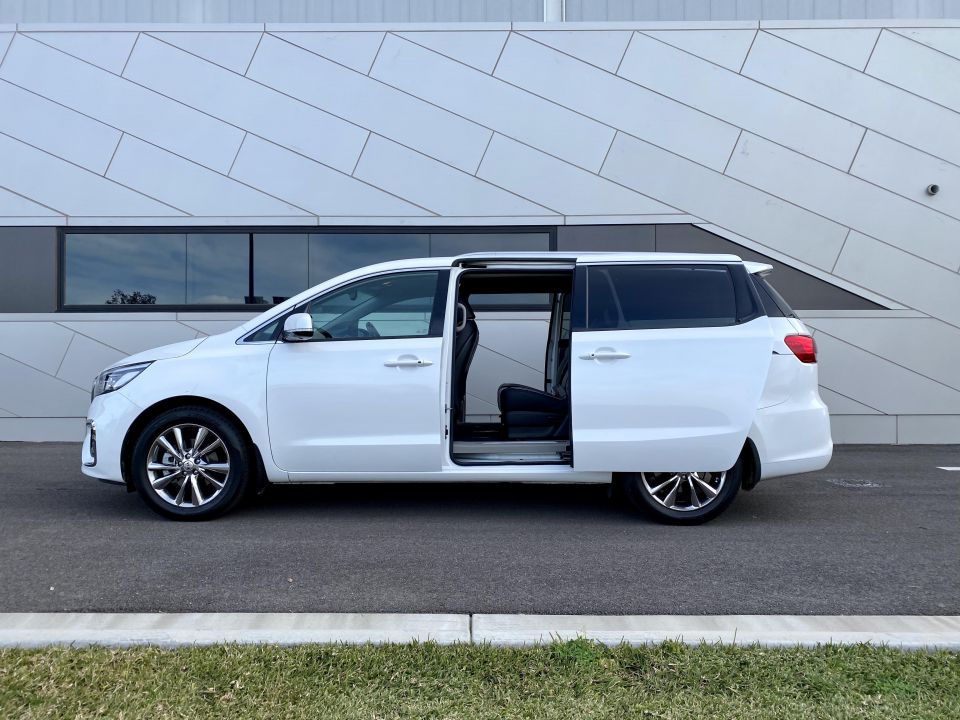

Senior Contributor
New from
$42,490
excl. on-roads

Senior Contributor
New from
$42,490
excl. on-roads


Senior Contributor
New from
$42,490
excl. on-roads

Senior Contributor
New from
$42,490
excl. on-roads
Quickly see how this car stacks up against its competition. Select any benchmark to see more details.
Where expert car reviews meet expert car buying – CarExpert gives you trusted advice, personalised service and real savings on your next new car.
UPDATE: 2021 Kia Carnival Review
Common wisdom says old-fashioned people-movers are a dying breed, and that less-practical but higher-riding SUVs are what people really want.
Clearly somebody forgot to forward that piece of advice to Kia, because its long-serving Carnival has been racking up huge sales for years, among private buyers and big fleets alike.
This current model hit our shores at the end of 2014, and since then Kia has moved about 30,000 of them.

Over the same period, Australians only bought 57,000 new people-movers, meaning the Carnival has owned almost 50 per cent market share across its life cycle. That’s dominance.
A brand new model is on track to hit showrooms in the first stages of 2021, but that doesn’t mean the outgoing car is outgunned. Quite the contrary.
For starters, most of its competitors (Honda Odyssey excluded) are just vans fitted out with windows and seats. Sure, they glam up well enough, but the Carnival offers a degree of ‘SUV-ness’ that the others fail to, without sacrificing utilitarian merit.

The range kicks off at $43,885 before on-road costs for the fleet-friendly Carnival S petrol V6, with the diesel option an additional $2500. There are also Carnival Si and Carnival SLi spec levels to choose from with either engine.
But we have the range-topping grade here, called Platinum. It wears a sticker price of $64,185 before on-roads with the diesel, equating to a drive-away price of just under $70,000 depending on which state you live in. Kia’s promotional deal at the time of writing was $67,200 drive-away.
This Platinum’s price point puts it between the Mercedes-Benz Valente ($60,850 before on-roads) and ritzier V-Class ($83,130), and in line with an entry-grade and HiAce-based Toyota Granvia ($66,090).
It’s also priced close enough to high-grade large SUV like the Mazda CX-9 GT ($65,720) or Kia’s own Sorento GT-Line ($61,990) – both of which might have the right ‘look’, but which fall short in terms of outright interior space.
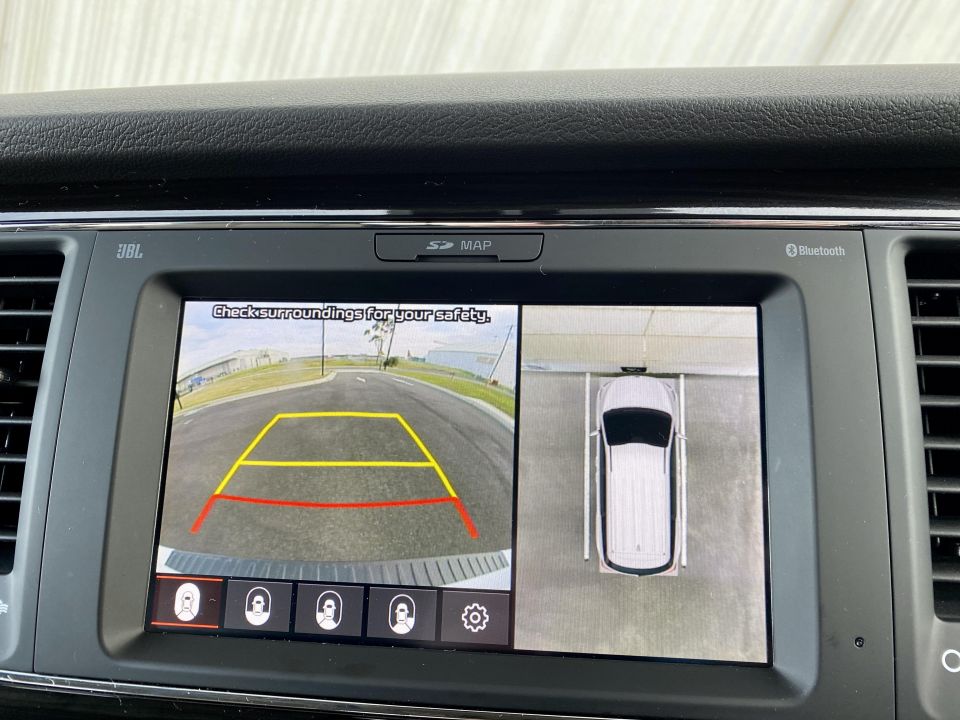
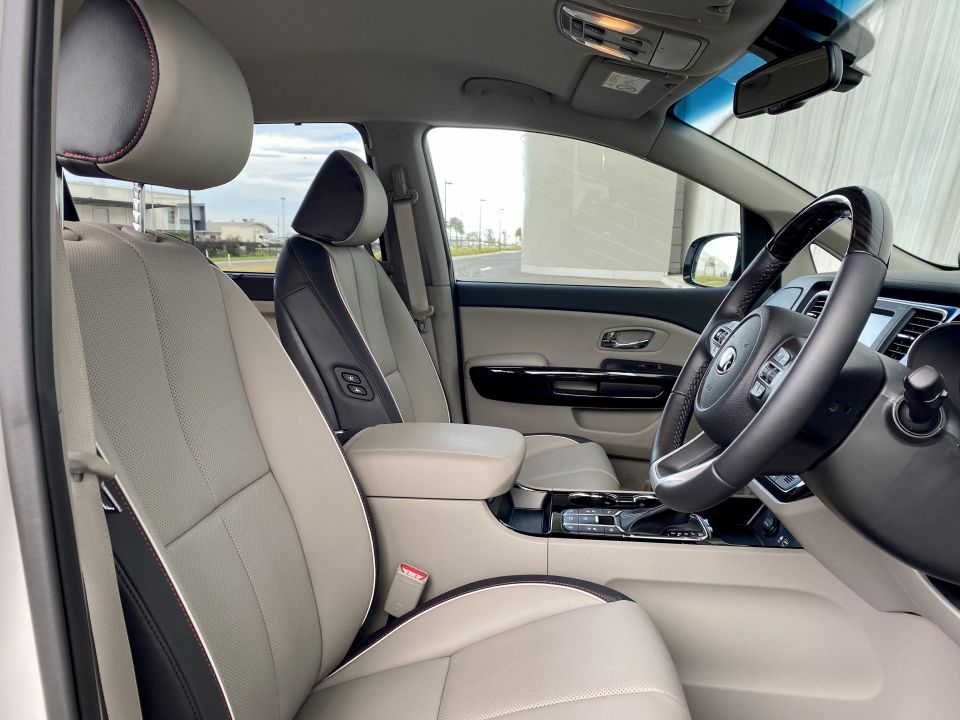


On the outside, huge 19-inch alloy wheels with a chrome-like finish, LED dusk-sensing headlights with auto levelling, LED tail lights, roof rails, parking sensors at each end, powered sliding side doors and tailgate, and rear privacy glass.
Inside there’s push-button start and a proximity key fob, ‘leather-appointed’ seat trim, powered front seats with heating and ventilation, a surround-view camera, three-zone climate control, a 7.0-inch TFT trip computer, an 8.0-inch touchscreen, satellite navigation with live traffic updates, Apple CarPlay and Android Auto (with voice recognition), and a JBL eight-speaker audio system.
In terms of safety features there are dual-front and dual-front-side airbags, plus curtain side airbags covering the outboard seats in all three rows. There’s also autonomous emergency braking for cars, rear cross-traffic alert, blind-spot monitoring, lane-keeping aids, and active cruise control.
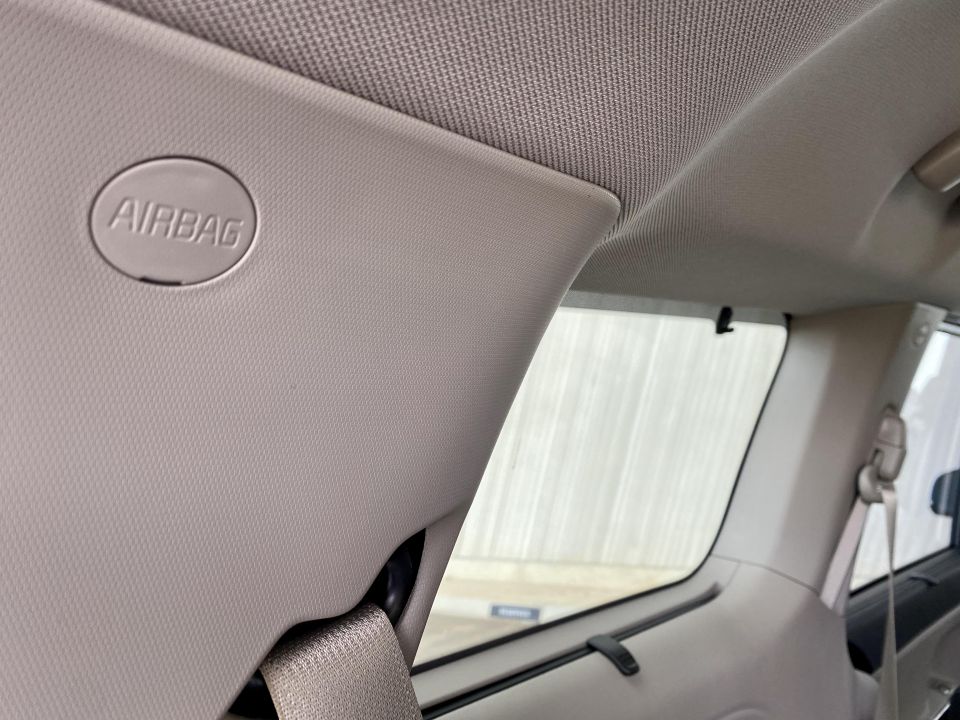
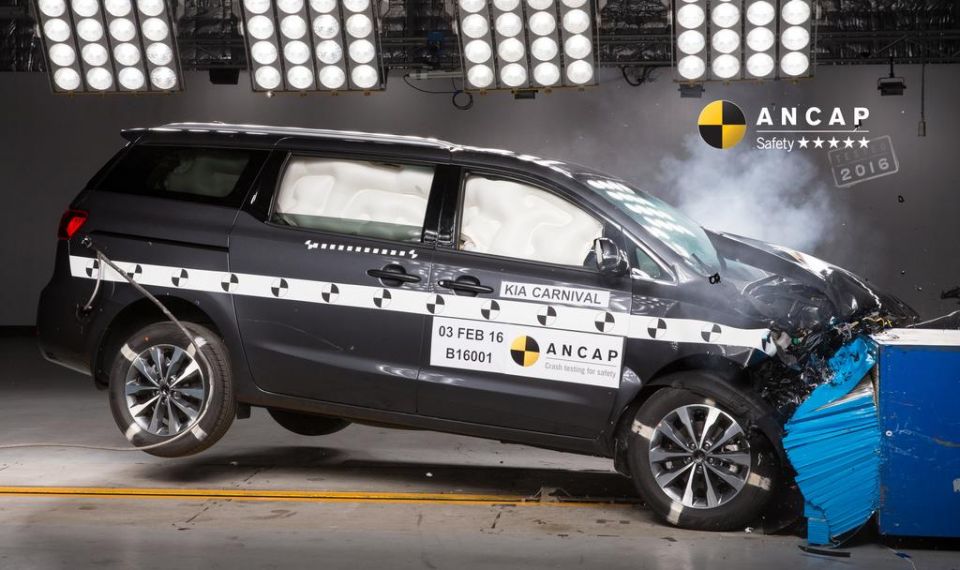
The Carnival carries a five-star ANCAP crash rating with a 2016 date stamp, having managed a score of 34.62 out of 37 including 100 per cent for side-impact protection.
The report did note during the frontal-offset collision test that “the passenger compartment held its shape reasonably well… except for footwell and firewall separation. Pedal movement was excessive”.
You can find more details and highlights on all the safety features on the official Kia Carnival website.
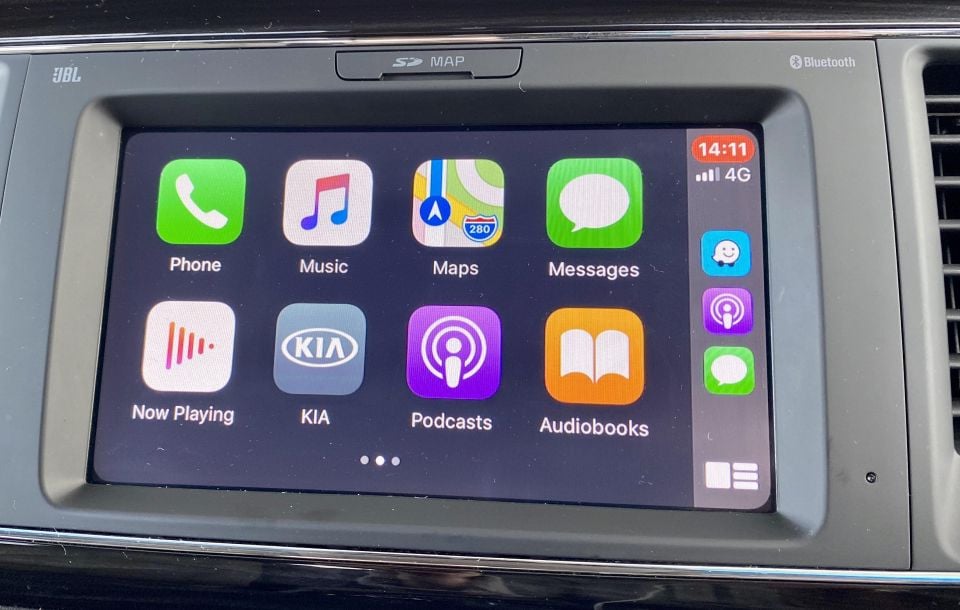
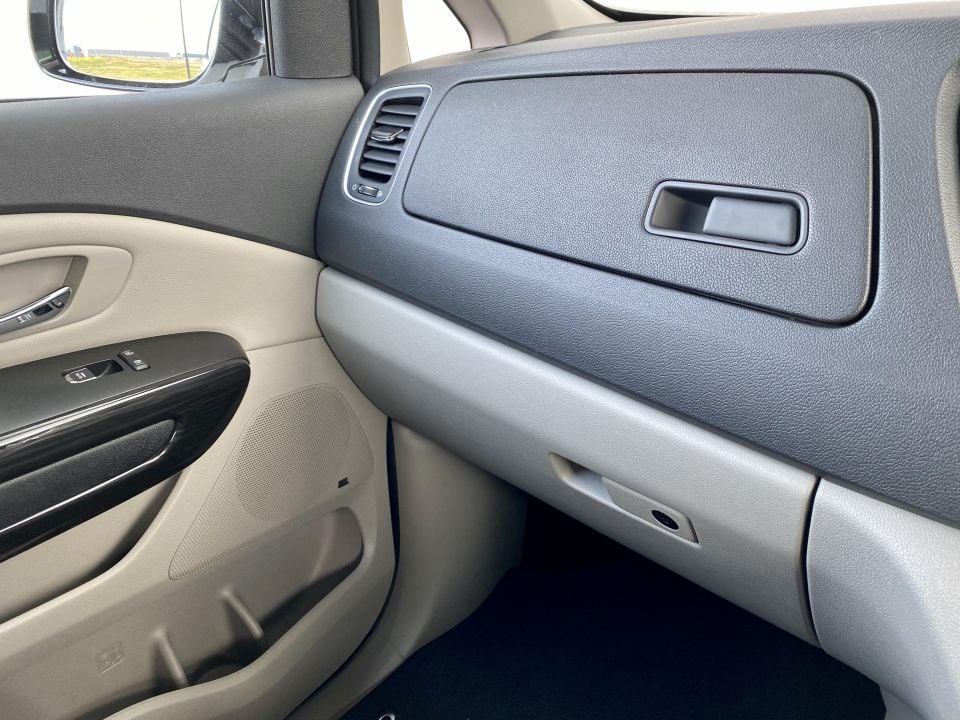
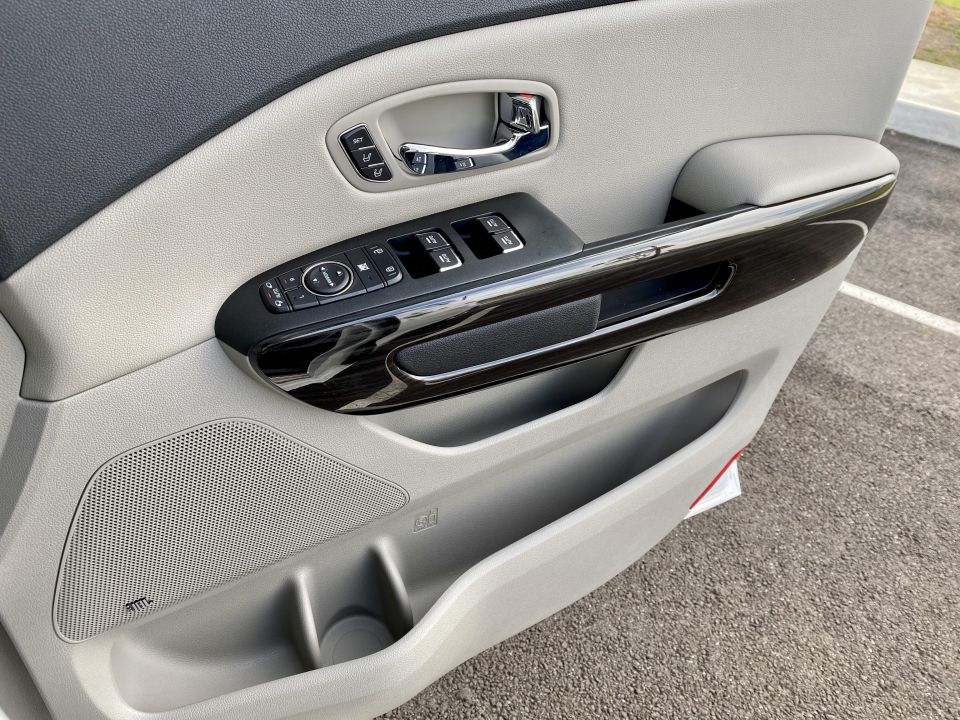
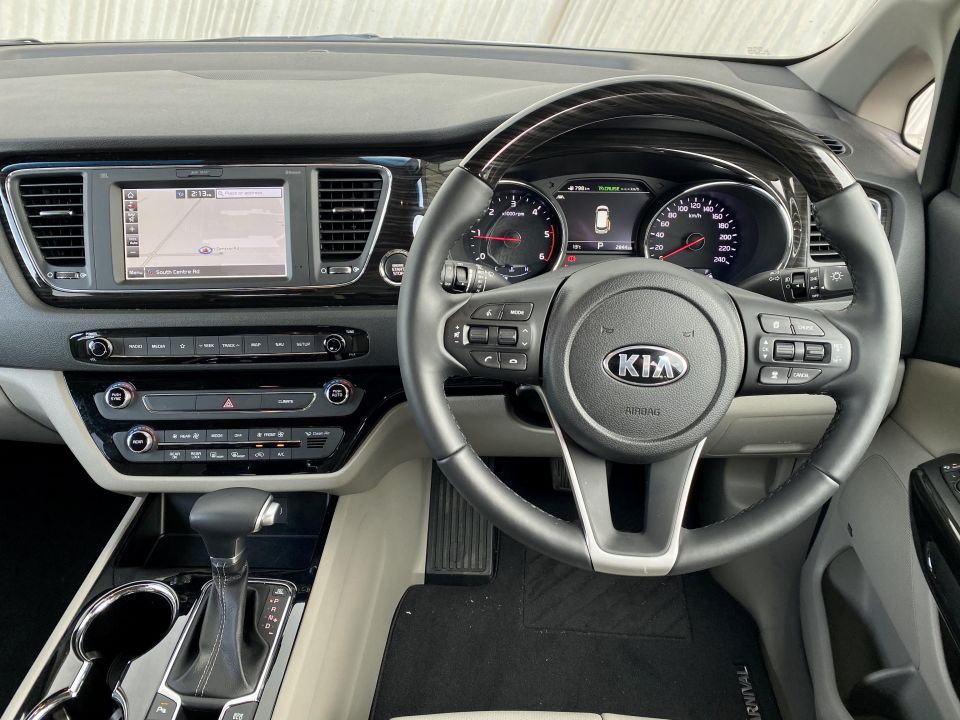
It’s starting to look a little dated up front – small screen, the wheel design, lots of buttons, largely analogue instruments – though there’s ample seat and wheel adjustment and a commanding driving position reminiscent of an SUV.
The centre touchscreen has navigation and phone mirroring to keep things contemporary, and there’s a digital speedo in the instruments. The audio quality from the JBL system is decent enough to make a family road trip entertaining.
Some materials like the gloss-black plastics on the fascia and steering wheel rim aren’t to my taste, and the cream-coloured trims won’t be easy to keep clean. But build quality is hard to fault, based on our tester.
There’s a heap of cabin storage including 10 (!) cupholders, decent door bins, two closing gloveboxes (one of which is cooled), and shopping bag hooks.
The second seating row is accessed by sliding side doors that open and close at the push of a button or single pull of the handle. They fit three across and both slide on rails and lift upwards to make access to the third row easier.
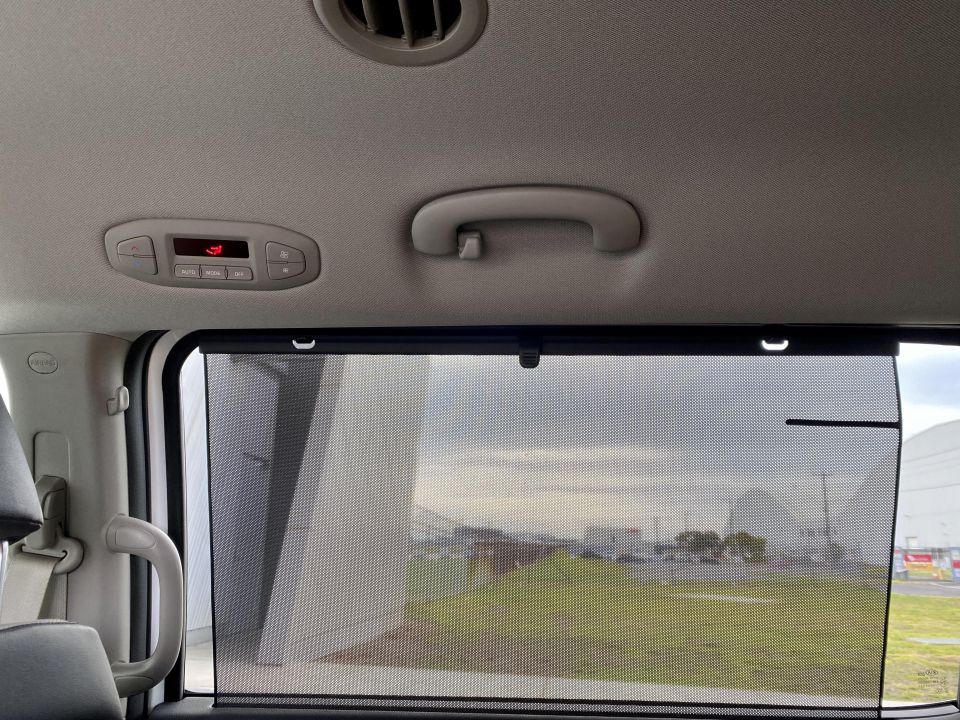

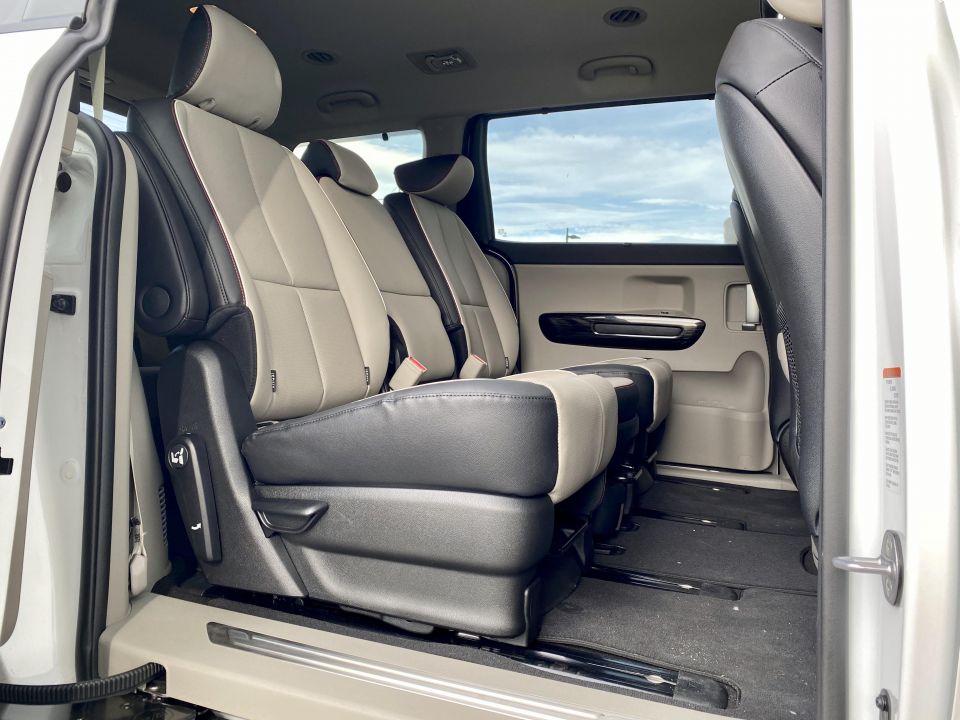

There’s a heap of legroom and head/shoulder room for two big adults, or three for shorter trips, and amenities such as pull-up sun blinds, vents in the roof, and grab handles. The middle seat-back also folds downwards and turns into a soft arm rest with two cup holders for outboard occupants.
Access to the third row is not a huge challenge. The back-row bench handles thee average-sized adults and offers vents, blinds, adjustable headrests, and large side windows to see out of.
All up there are four top-tether and three ISOFIX child-seat attachment points (one of these in the back row), and airbags that cover the entire side of the vehicle.
Storage space is bloody impressive. With eight seats in use there’s super-deep storage area with a 960-litre (SAE) capacity. With the back row folded into the floor (pulled up with simple handles) this grows to 2220L, and with the second-row seats standing upright, this grows to a van-like 4022L.

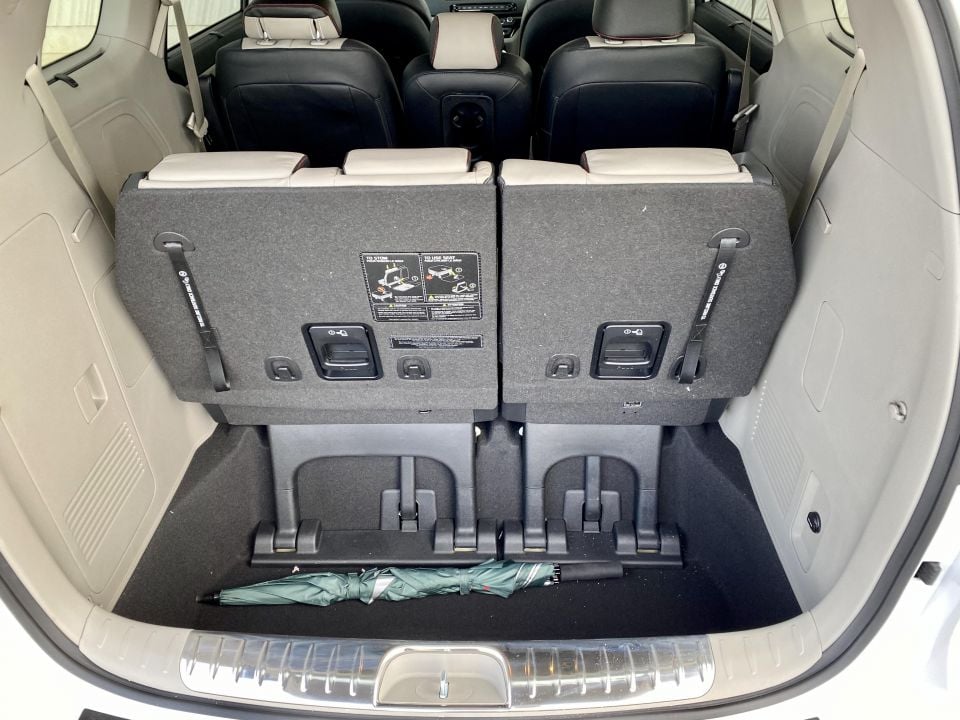

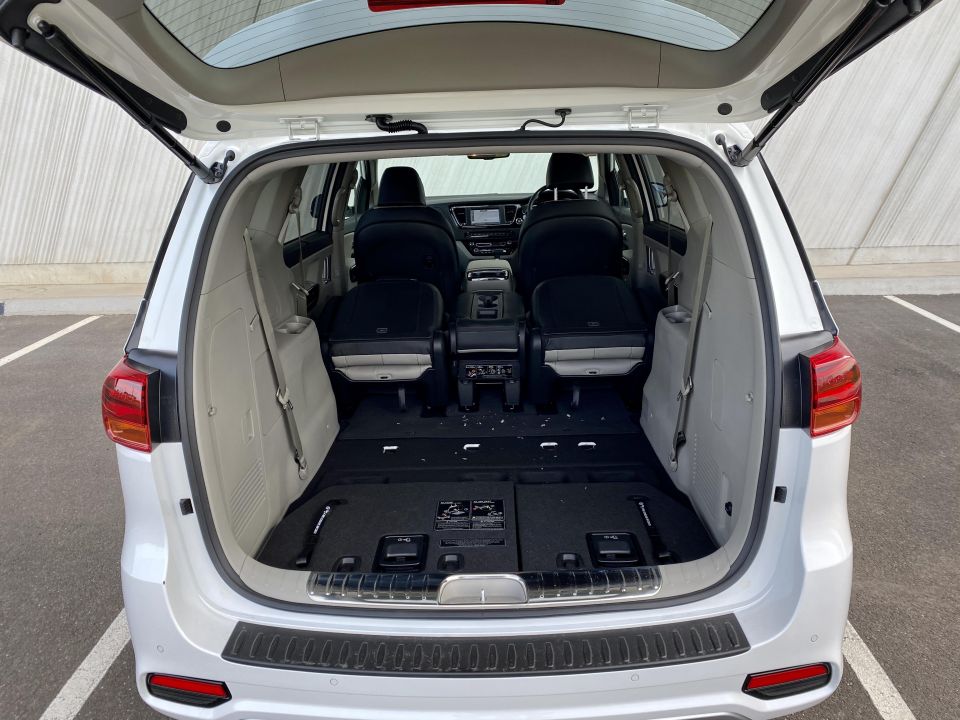
If smoothness and quietude are priorities, you can opt for a petrol V6. But if lowering your fuel consumption and getting more torque (pulling power) are key points, then the 2.2-litre four-cylinder turbo-diesel makes more sense.
It’s the latter that we have here. The engine makes 147kW of power at 3800rpm, 440Nm of torque between 1750 and 2750rpm, and uses a claimed 7.6 litres of diesel per 100km (the petrol is 10.8L/100km).
It’s mated to an eight-speed automatic transmission and is front-wheel drive.
The diesel donk isn’t the absolute last word in refinement, but it’s not as clattery and vibration-causing as some units of the type.
Importantly it has plenty of torque that makes chugging up hills with a load more relaxing than you might expect. This is a 2.2-tonne car with a 2830kg GVM, so it needs grunt. It’s available just off idle, so you’re not waiting all day for it to arrive either.
The eight-speed transmission was occasionally slower to upshift than we would like, which is something I’d imagine Kia is sorting for the new model. Around town, getaways are fairly smooth and unflustered.
Suspension comprises MacPherson struts at the front and multi-link at the rear, and the Australian-ised suspension tune focuses on ride comfort and bump isolation over flatness in corners.
The only downer is a tendency for the 19-inch wheels and slimmer-sidewall (235/55) tyres to occasionally amplify low-speed bumps a little, though its ride is much more resolved than a Honda Odyssey’s and its handling more car-like than its van-derived competitors.
The brakes are quite beefy – 320mm and ventilated at the front and 324mm solid discs at the rear – and the car pulls in well enough, while its 11.7m turning circle is okay for a 5.1-metre long beast.
The Carnival is one of a dwindling list of cars using a hydraulically-assisted power steering system rather than a link-less electric motor-driven unit, meaning there’s more weight and resistance through the wheel. It’s hardly bus-like and you don’t need Popeye arms, but it’s notable.
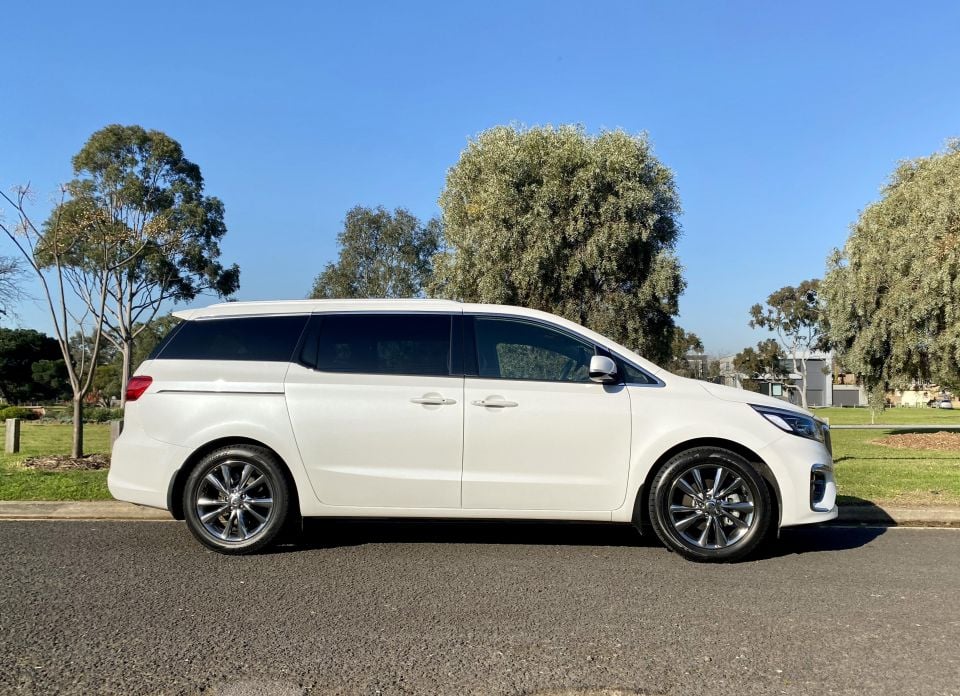

Kia has a fantastic, transferrable seven-year warranty with no mileage ceiling. However, this becomes a seven-year/150,000km warranty if you’re using the Carnival as a rental vehicle, taxi, hire car, or tour bus on a commercial basis.
Service intervals are annual or 15,000km and Kia renews its roadside assist plan for a year each time you use a dealer for servicing. The capped-price services cost, per visit: $374, $573, $433, $710, $420, $701, and $446. These prices should be all-inclusive.
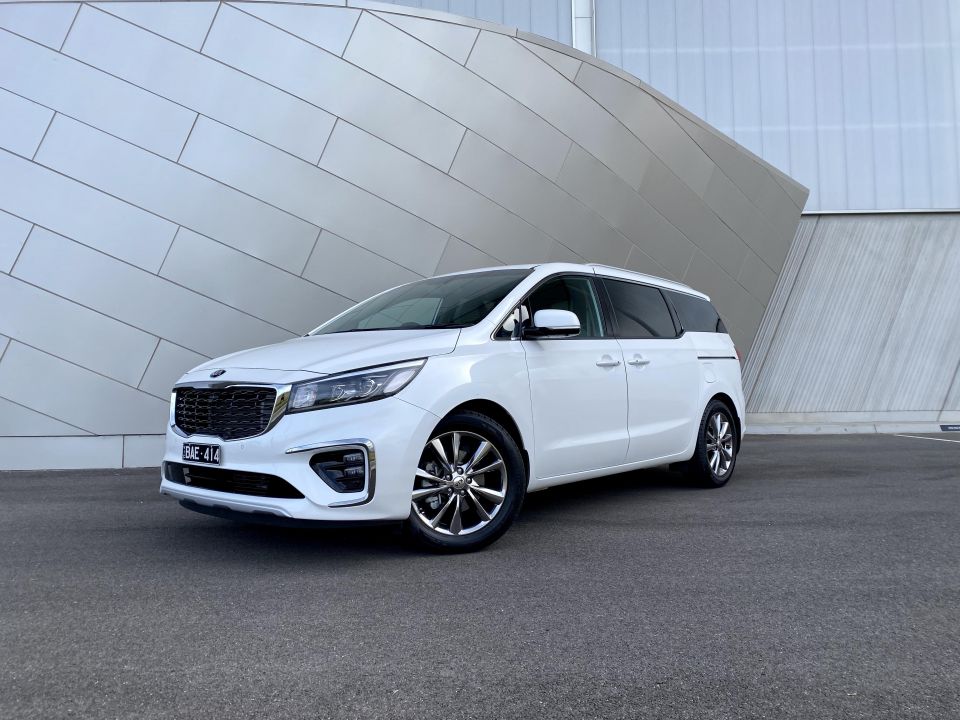
The Kia Carnival is the nation’s number-one people-mover for good reason: it’s well-priced, drives more like an SUV than a van, manages to look slightly cool despite being a glorified minibus, is genuinely massive on the inside, and comes with a long warranty.
Indeed, the runout model is still quite good enough to be worth your money, which makes me ponder how great the brand-new one is going to be.
Where expert car reviews meet expert car buying – CarExpert gives you trusted advice, personalised service and real savings on your next new car.


Josh Nevett
5 Days Ago


Andrew Maclean
4 Days Ago


Shane O'Donoghue
4 Days Ago


Anthony Crawford
3 Days Ago


Matt Campbell
2 Days Ago


James Wong
1 Day Ago